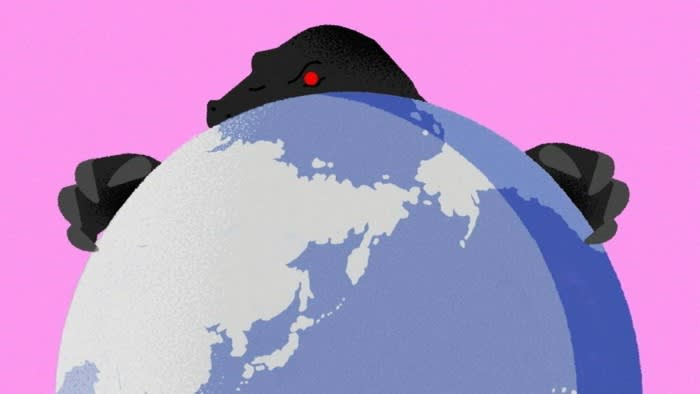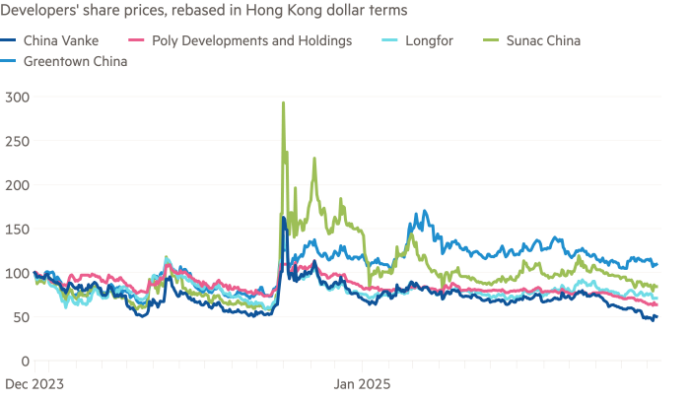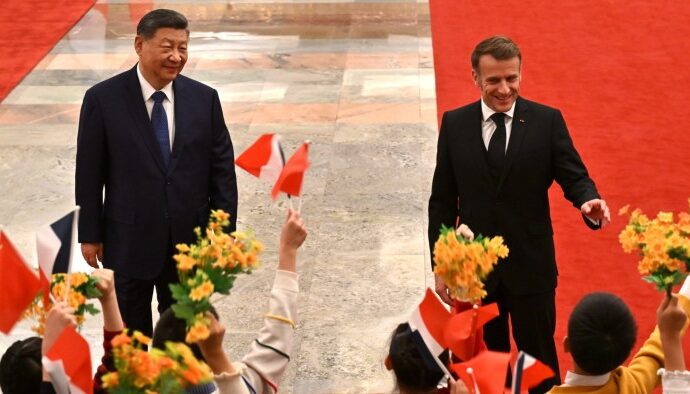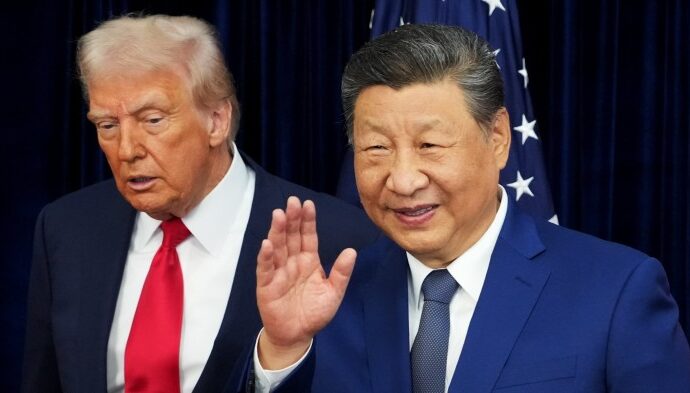
Unlock the Editor’s Digest for free
Roula Khalaf, Editor of the FT, selects her favourite stories in this weekly newsletter.
There is a moment in the latest Godzilla film when the creature glares directly into the camera, its snorting, radioactive rage every bit as infinite and incomprehensible as it was in the 1954 original.
But look carefully behind those mad, luminescent eyes, and there is something even more boundless: fatigue. Specifically, the tiredness of extreme overwork. Because, over the course of nearly 70 years and 37 films, Godzilla has in many ways been Japan’s most put-upon worker — a scaly Stakhanov toiling year after year in the mines of metaphor.
Whenever postwar Japan has required a diverting, sometimes quite silly allegory to help make sense of seven decades of breathtaking domestic and global change, it has leaned with confidence on Godzilla. It has done so knowing that everything from nuclear threat, environmental catastrophe and pandemic to geopolitical rifts, political hubris and human stupidity can be projected on to the teeth, claws and dorsal spines of this one, city-smashing monster.
Just as the Japanese have grown used to trains running on time, they have come to rely on Godzilla: a ruthlessly efficient encapsulator of life in a world where terrible threats keep arising and of our collective — often wrong-headed, prejudiced or ill-informed — response to that inevitability.
For Japan, of course, but also for the world in general, therefore, there has hardly been a more apt time for him to roar up once again from the depths.
Given how readily Godzilla can epitomise any misery the viewer wants to see, the latest outing — Godzilla Minus One (Gojira -1.0 in Japanese) — works the monster’s allegorical powers especially hard.
The film is set in the immediate postwar ruins of 1940s Tokyo: there is considerably less architecture than in previous films for the monster to destroy, which makes the obliteration of what little has been rebuilt much more poignant.
The central (human) character of the film is a traumatised Japanese veteran, followed from the battlefield and into civilian life by the inexorable reptile. The man helps to care for an infant found orphaned in the war’s rubble and joins a team on a minesweeper in the waters off Tokyo.
There is, as ever, a nuclear warning in all this — the monster becomes more dangerous when mutated by US nuclear tests — but on its most straightforward reading, the film is a metaphor for the process of national rebirth. Godzilla represents the collective despair and guilt of war felt by its participants, and war’s capacity to remain destructive well after the final bullet is fired. It is only by utterly destroying this fiend that a new Japan (signified by the infant) can flourish.
But, of course, Godzilla can lift far more contemporary metaphorical weight than that. Japan in 2023 may well feel that it has suffered traumas that must be aggressively wiped out for things to move on.
Can it be a coincidence that Godzilla’s appearance in this new film is preceded by the wholesale bloating of marine life? Under the monster’s malign influence, Japan’s cherished seaboard becomes a mass of fish deformed by huge bubbles, much — perhaps — as its financial and property markets did in the 1980s before the nation confronted their collapse. It is only by wiping this crisis from the collective memory (as time and generational distance are now gradually doing) that the nation can truly put the destructiveness of the episode behind it.
But there is more. In keeping with tradition, the monster is ultimately felled by a scheme hatched by a tousle-haired scientist. In this case (spoiler alert), it is given a rampage-ending case of the bends by being first plunged to the depths of the ocean and then sped back to the surface on giant inflated balloons.
Rapid reflation from the trough of deflation, in other words, saves the day. Now where, as Japan finally emerges into an inflationary era from decades of stagnant prices and wages, could that idea have come from?
Wondering whether any of this was intentional does not spoil the fun. Quite the opposite — the central joy of this monster is how very easily the outwardly unmalleable creature can be squeezed into any interpretation.
But that is also the source of its bleakness. Godzilla, like every crisis it represents and however permanent the monster’s dismissal seems as the credits roll, can absolutely be relied upon to return as the symbol of some fresh blight. Each new film, for all the gnashing and tail-thrashing, accepts this with a realism that, as a world clamours for quick fixes and easy answers, can too often be missed.


